How long do chinchillas live?
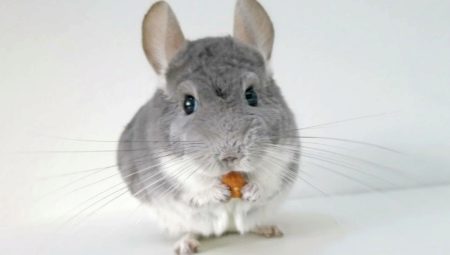
Chinchillas are cute fluffy rodents with big beautiful eyes and delicate thick fur. The hunt for their valuable fur has led to the almost complete extermination of these animals and their entry into the Red Book.
Today, chinchillas are domesticated. It should be noted that it is the only odorless rodent. There are many special nurseries for breeding these animals, you can also buy chinchillas at any pet store.


Life cycle
The life cycle of captive chinchillas is no different from that of wild relatives.
- Any individual becomes fully sexually mature from 8 months, and the female can become pregnant (early pregnancy from the seventh month of life is very harmful to health).
- The onset of pregnancy in the female is evidenced by the exit of the cork (a dense film that can be found during cleaning in the cage).
- The female begins to gain weight quickly (up to 20 grams per week) and bears puppies for 3.5-4 months.
- It can bear up to 3 offspring per year, each of which can have up to 5 babies (in natural conditions, they reproduce once a year).
- The number of individuals in a litter for the first few years can be 1–2 puppies, with age this figure can reach 5.
- Chinchillates are born with short hair, fully formed teeth and open eyes. Childbirth often takes place without human assistance, and lasts about 3 hours. It is necessary to wait until the end of the birth of the entire litter, give time to the mother to lick all the puppies and let them dry, only after that they can be taken with clean hands and carefully examined (it is better to invite a veterinarian for examination one day after giving birth).
- If the puppies are large, childbirth can go with complications and become protracted - an urgent need to call a veterinarian.
- For the first two months, babies need mother's milk and her presence. From 2 weeks of age, you can gradually begin to introduce dry food into the diet.
- If the female has little milk, lactation can be increased by feeding her with dried strawberries and alfalfa.
- Chinchilla growth continues until 2 years of age.
- The maximum weight of an adult can be 600 grams.
- The ability to reproduce at home lasts up to 15 years.
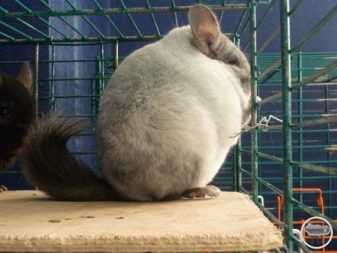
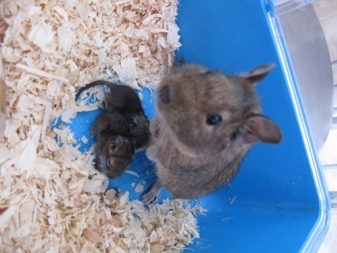
For reproduction, it is best to leave chinchillas with a thick, uniform fur coat, clean clear eyes and clean ears, a health assessment should be carried out by a veterinarian at 6 months of age, before maturity.
Chinchillas - expensive to breed in captivity on farms - die quickly if not properly cared for and maintained. One fur coat requires at least 100 skins of 2-year-old animals, therefore, it is impractical to breed them on a private farm for the delivery of fur and can result in the loss of a large sum of money.
It is much more profitable to maintain a nursery for the sale of live animals, but it is necessary to strictly follow the rules of care and use high showcases with 2 or 3-storey houses inside for maintenance. With improper maintenance and care, chinchillas may not breed at all, or the female may refuse to feed the puppies (and they need milk every 2 hours).
Breeding chinchillas in captivity is a very troublesome business. The life cycle does not depend on where the animal lives: in natural conditions, in an apartment or on a farm, but the life expectancy of domestic animals, with proper care and maintenance, is almost 2 times higher.
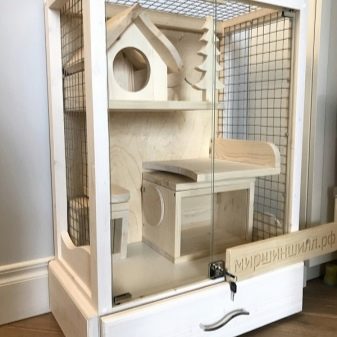
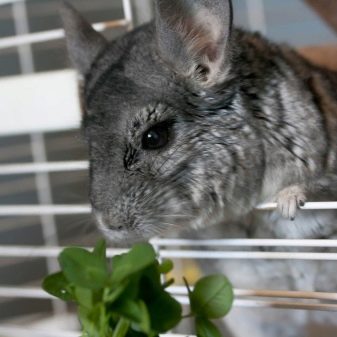
What determines life expectancy?
Individuals acquired from a conscientious breeder differ in longevity, which excludes the possibility of offspring from close relatives and sick individuals. It is better to purchase in a trusted nursery with positive reviews or on a recommendation. Substandard animals are cheaper and are sent to pet stores and bird markets for sale.
If the chinchilla does not meet the standard, its lifespan can be only a few years.
The lifespan of these animals directly depends on the conditions of detention: with proper care at home, they can live 15 and even 20 years, while in nature the average lifespan is no more than 12 (mobility decreases with age, the chinchilla becomes an easy prey for predators and poachers).
It is best to keep a couple of chinchillas in an apartment (they do not like loneliness), but at the same time they can begin to actively reproduce. These cute rodents are highly susceptible to stress: harsh sounds (construction noise, drill, screaming and even the noise of a working TV) have an extremely detrimental effect on chinchillas. Under stress or health problems, they immediately lose their hair in shreds.
Significantly shortens life span and improper feeding: chinchillas should not be given raw vegetables, fruits, boiled eggs and meat. Such complementary foods will ruin the digestive system of the animal and can lead to death.
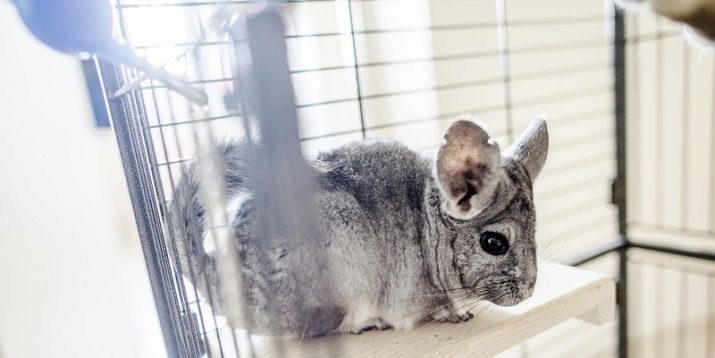
How to determine the age of a chinchilla
You can determine the age of the animal by the following indicators:
- corns on the feet - the more there are, the older the animal is;
- teeth - the whiter they are, the younger the individual;
- muzzle shape - up to 6 months, it is almost flattened, noticeably stretches with age;
- body type - the larger the individual, the older it is.
If you buy an animal for keeping in an apartment, it is better to choose 4-month-old chinchillas and gradually teach them to hand. Girls are less playful and like to hide, they need peace during pregnancy, they make contact with only one owner. Boys are more sociable and playful. Chinchillas love to sit on the owner's head and do not like to be stroked for a long time.
It is impossible to change the habits of a chinchilla; when retraining, the animal gets stress and its lifespan is reduced.
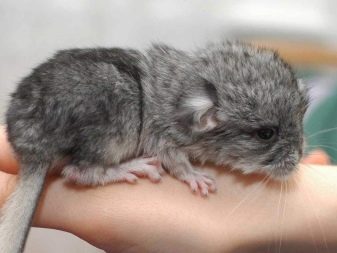
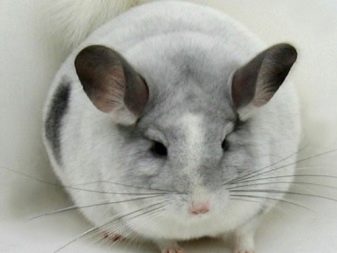
How to properly care for chinchillas?
The main thing in caring for a chinchilla at home is the temperature regime in the room: 18-22 degrees Celsius (puppies up to 1 month old should be kept at a constant temperature of +24 degrees), drafts and direct sunlight are contraindicated. The climate control system will do a good job of adjusting the temperature in the room.
It is necessary to let the chinchilla go for a walk around the apartment every day at 18: 00, so that the animal has time to run over and by 23: 00 it becomes calmer (you must first hide all the wires and small items). But at night, the rodent will still make a little noise: gnaw sticks, drink water, jump around the house.
During a walk, chinchillas should not be left unattended: they love to crawl into various crevices and can get stuck, for example, between a wall and a closet - emergency assistance is required.
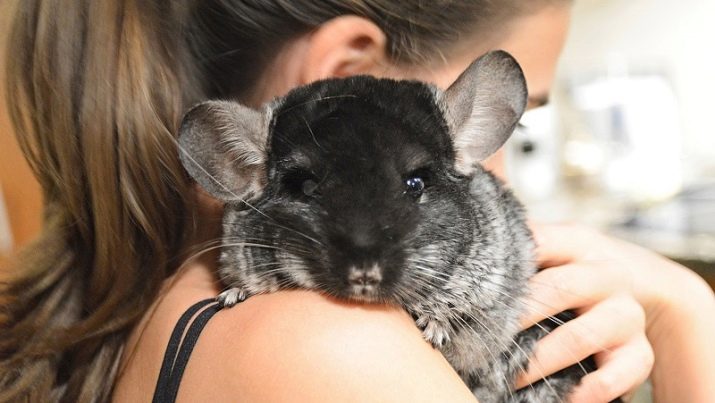
Chinchillas must be properly looked after and all recommendations must be followed.
- The cage should be spacious (at least 1 meter wide), but have frequent strong rods (the distance between them is no more than 2 cm).
- A showcase is best suited for keeping - there is no danger of the animal getting stuck between the rods, garbage does not fly to the floor of the apartment, the showcase can be made to order: height - 1.5 meters, depth - 60 cm, width - 60-80 cm, with a retractable pallet for facilitate the maintenance of cleanliness.
- To maintain good physical shape (easily prone to obesity), the cage should have shelves or a house with several floors and passages; if there is no house, the shelves should be wooden to avoid injuries to the paws of the animal and be firmly fixed with bolts.
- Drinking bowls should be glass, chinchillas quickly gnaw plastic. Only boiled water is permissible with a mandatory replacement once a day.
- The feeder must be securely fastened so that the chinchilla cannot drag it around the cage.
- The sennik should be attached to a strong chain, filled with hay of meadow grasses (change once every 7 days).
- Shelter for rest (spacious enough glueless wooden house, no paintwork). Some individuals like to sometimes lie in a hammock, but most prefer closed houses.
- The bath should be closed (you can replace it: put a small deep plate in a basin with high sides - when the animal is washed, the sand flies in different directions). In no case should you use water for bathing. Chinchillas wash their thick fur only in special sand or volcanic dust (the bathing suit must be placed in a cage for 30–40 minutes, then cleaned or bathed the animal in a cup no more than 2 times a week). Additional care of the fur is not required.
- Chinchillas' teeth grow throughout life, so it is necessary to provide materials for grinding: chalk, sticks, strong dried currant twigs. You can give a mineral stone for several hours (during a walk, once a week), but it cannot be kept in a cage all the time. It is strictly forbidden to give pumice stone - teeth are badly damaged from it.
- The bottom of the cage should be covered with shavings of linden or other fruit trees (shavings of coniferous trees are categorically contraindicated, they release resin toxic to rodents).
- It is recommended to clean up the waste of these cute animals daily, but general cleaning is best done once every 10 days, so as not to disturb the chinchillas too often.
- It is recommended (but not necessary) to treat clean cells with ultraviolet light before placing feed and shavings.
- Chinchillas can only be fed dry food: 1 tablespoon per day. You can buy the combined mixture at the pet store, give additional dried apples, pears and berries.
- It is forbidden to feed seeds, nuts, raw vegetables and fruits, boiled eggs and meat.
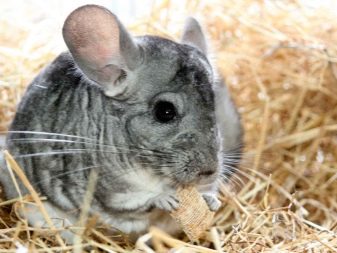
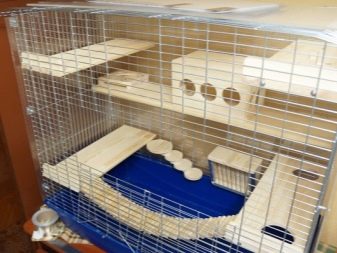
Walking chinchillas on the street is categorically contraindicated:
- are afraid of harsh sounds and tend to hide;
- if they cannot hide, instant cardiac arrest may occur;
- chinchilla is a treat for crows and cats;
- can pick up something from the ground, eat it and get poisoned.
You cannot buy a wheel: under the weight of the animal, it can break and the animal will be injured. It is advisable to check with a veterinarian once every 6 months for timely detection of health problems and assistance. When buying, always look at the conditions in which the chinchilla was kept, ask the breeder how to care for the animal, ask what the chinchillas are fed. A good breeder will advise exclusively dry food and dried berries, and the presence of rotting or fresh vegetables in the cells of the breeder, as well as seeds, should help refrain from buying from him, because with such feeding, the gastrointestinal tract hopelessly deteriorates, and the chinchilla will hurt, the life span will be noticeably reduced.
If it is inconvenient to immediately refuse a purchase, you can say that you will think about it or consult with your family, it will be easier to refuse by phone.
Difficulties and significant spending of money in the maintenance of chinchillas are found only at the initial stage of arranging their life, daily care and feeding take only a few minutes a day.


If you take proper care of the chinchilla, the animal will become a faithful friend for many years and will only bring joy.
For information on how to properly care for a chinchilla, see the next video.








